These posts are not for foraging. They are intended for entertainment and intellectual satisfaction only. These posts are not a field guide nor comprehensive in any way - their accuracy is not assured in any way. Do not eat wild mushrooms unless you are a professional, have substantial professional assistance or have a wealth of personal experience with a specific species. Do not make any foraging decisions based on these posts. To do so could be dangerous or life threatening.
These Posts Contains No Information Regarding Edibility Or Toxicity
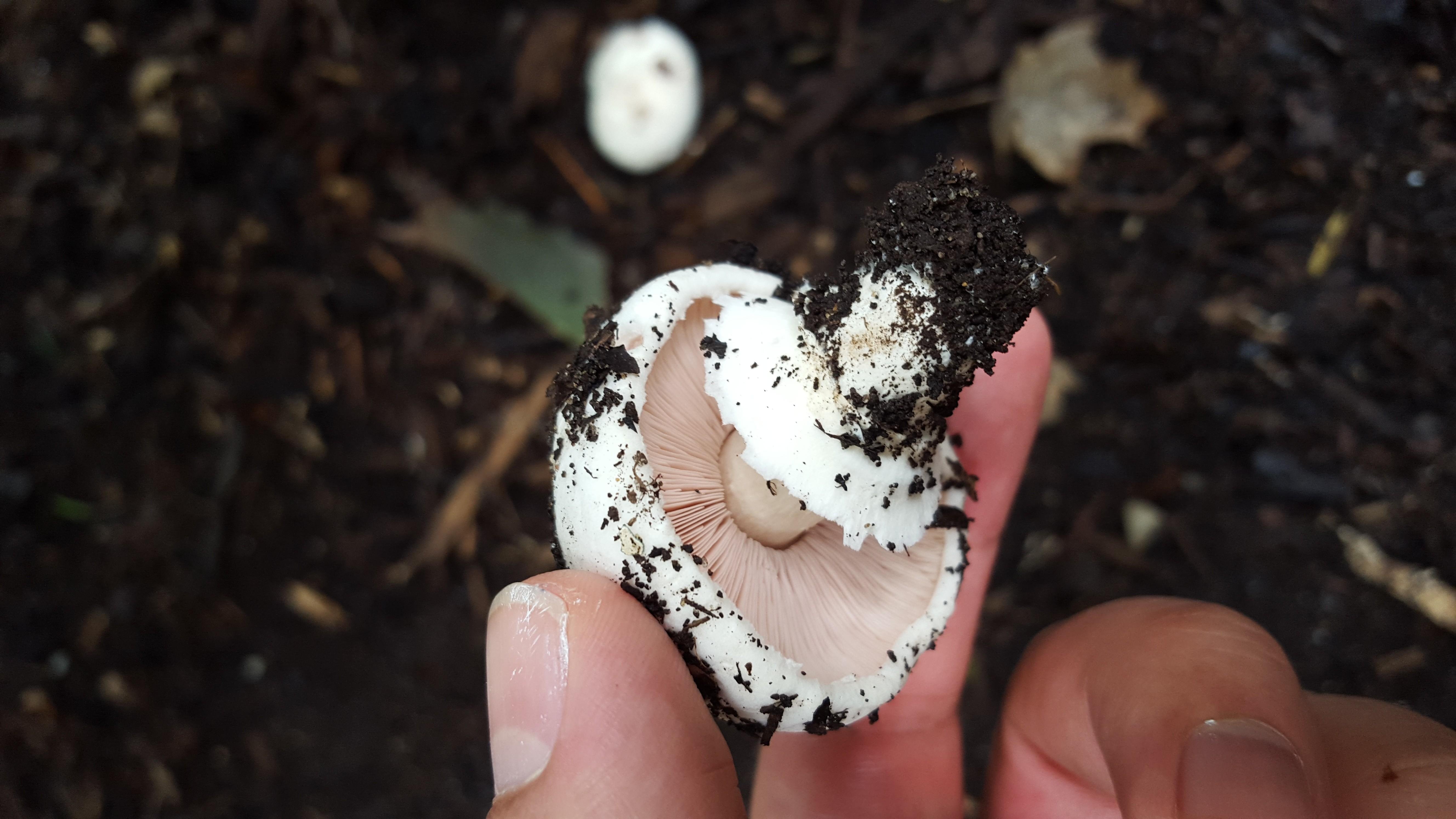
Does that mushroom look familiar?
It ought to - it is a very close cousin to the most popular mushroom in North America, A.bisporus, which we covered in the last full species post. Except, unlike A.bisporus, this little mushroom was not bought in a supermarket, but found right outside my apartment building in the now mulch covered lawn.
I actually love this particular photo of the mushroom. It highlights the free, gorgeous fresh pink of the young gills, the clear, un-deteriorated veil remnant, the perfect white of the cap, lack of a volva or egg, and even the smooth hint of the 1cm or so thick stem. It's a beautiful mushroom.
Just looking at this picture I am fairly certain that that this mushroom falls in the Agaricus genus. The terrestrial origin, white cap, partial veil, lack of a volva, and especially the pink gills are all giveaways for the genus.
But to get to a species we have a ways to go. Let's chop this beauty in half
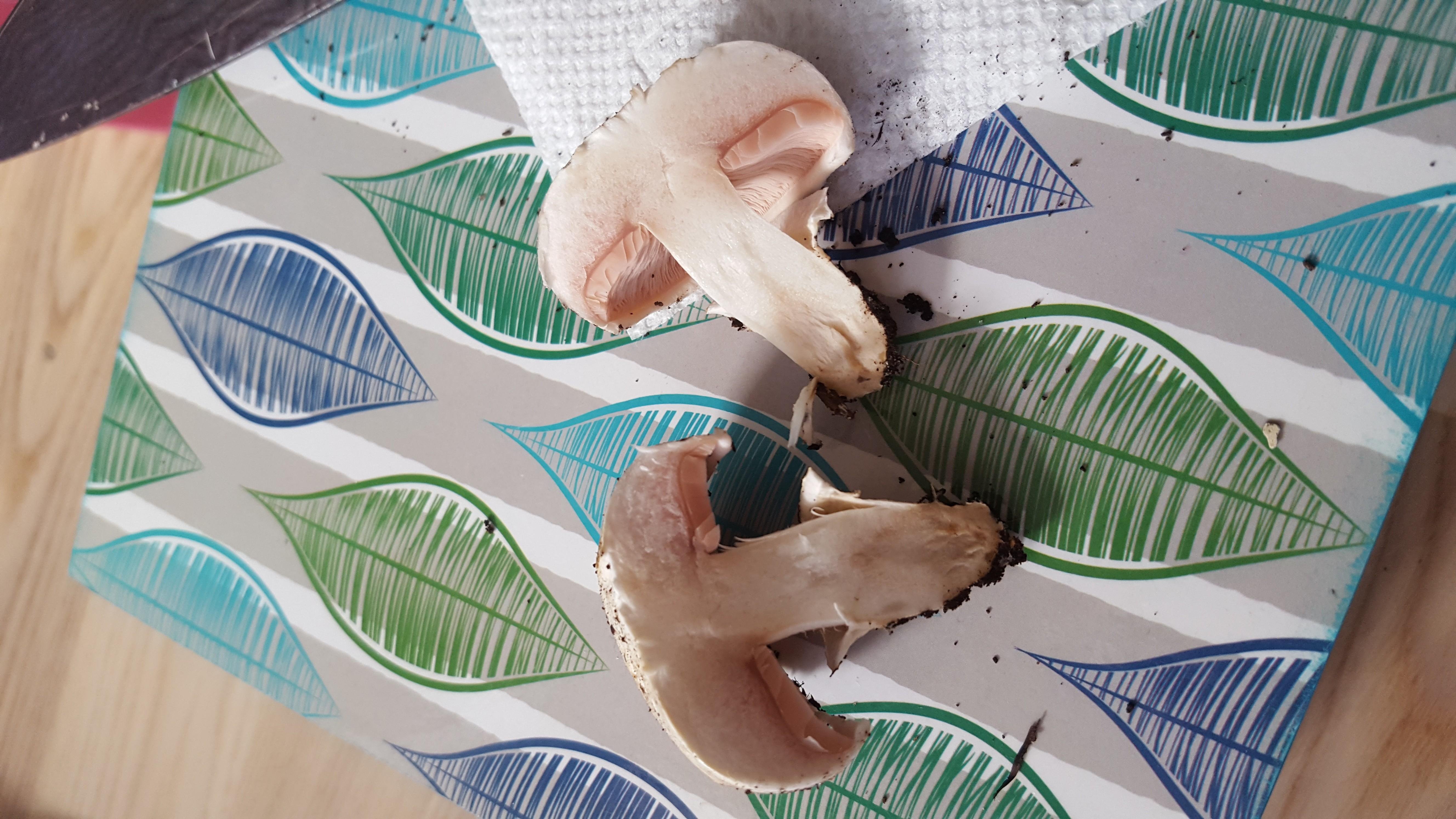
There are some important things to take note of here
First, the flesh, when originally cut, was completely white, through and through. However, with just a little bit of time, there was a touch of discoloration in the damaged mushroom flesh. You can see the slightest pink/red discoloration in the flesh on the piece to the right. This is actually super important.
There are many species of Agaricus mushroom, not just limited to A. bisporus, and they can be difficult to tell apart. One important question is whether the mushroom's flesh discolors when damaged and, if it does, what color? There are three main possibilities - no discoloration (Like A.Bisporus), yellow discoloration (like A.xanthodermus, or a slight to substantial pink/red discoloration.
Even in this latter possibility, there are still species with distinct effects. For instance, if this mushroom discolored a more vibrant red, I might consider that it was A.silvaticus. However, the discoloration of the mushroom I got here never progressed beyond the slight pinkish red color you see in the photo above. Multiple sources cite to this effect in newer, moist specimens of A.campestris.
The side shot of the bifurcated mushroom is also edifying
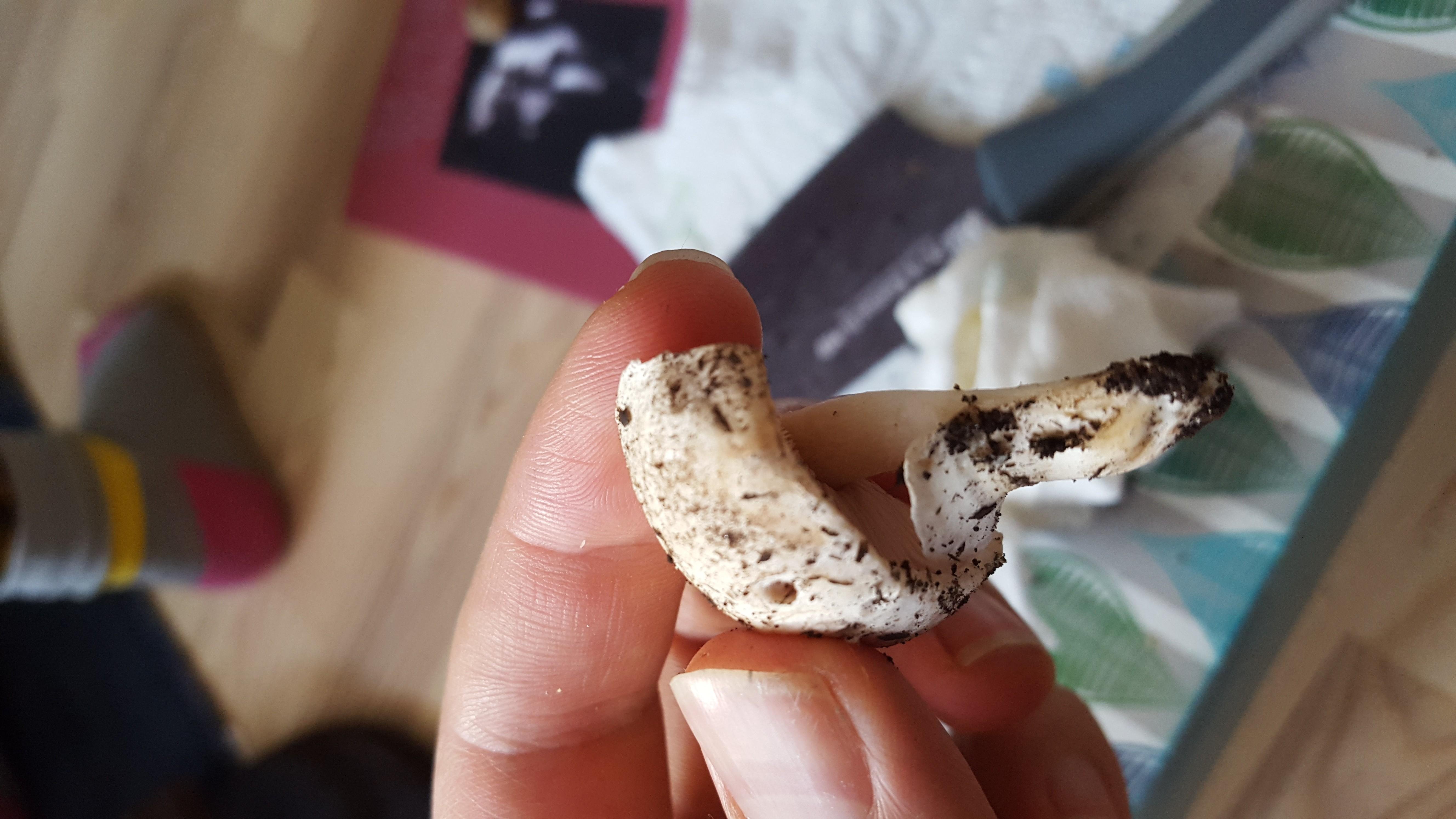
This gives a good look at the veil on one side of the mushroom.
You can see that the veil is still barely attached to the mushroom cap. If I had gotten to this specimen perhaps half a day or so sooner, the veil would have been covering the young mushroom's gills entirely. As the cap expands, the veil pulls away from the gills and the remnant of the veil will often be left as a ring on the stem. However, this can fall off with time, so it is not a dispositive trait to rely on with Agaricus mushrooms.
There is no picture for this next trait, but it is also super important for ID'ing an Agaricus - SMELL
The smell of an Agaricus mushroom will usually fall into one of roughly three categories:
- Plain, pleasant and mushroomy
- Sweet, almost almondy
- Heavily chemical and/or foul
This final odor is referred to as "phenolic" - and will often smell of asphalt or other chemicals. I found a mushroom with this odor once before and could not keep my nose to it for long. The odor can be very distasteful.
The mushroom I found here smelled pleasantly mushroomy, without almond. Let's get a spore print.
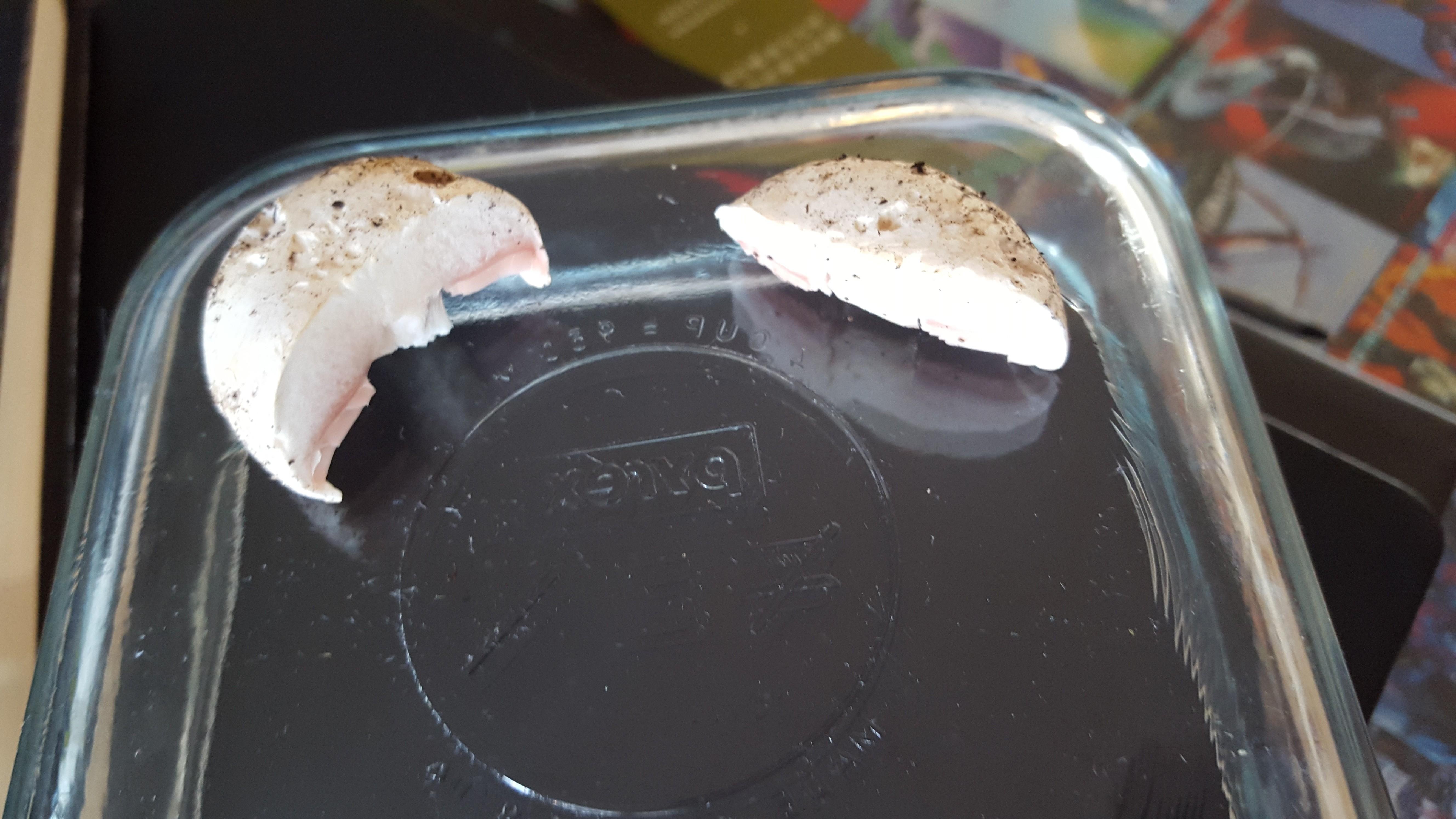
The spore print is absolutely essential in order to determine, for a certainty, whether a mushroom is in the Agaricus genus
There are several mushrooms that look somewhat like Agaricus mushrooms - they are sometimes confused for white gilled or white spore colored Amanitas for instance. The Agaricus mushroom will usually, but not always, have pink gills when young. However, even if the gills of the Agaricus mushroom do not start out pink, they will definitely turn chocolate brown with time, and the spore print will be a similar brown color.
Above you see the halves of the mushroom cap being left on a glass pyrex container.
Let's take a look several hours later
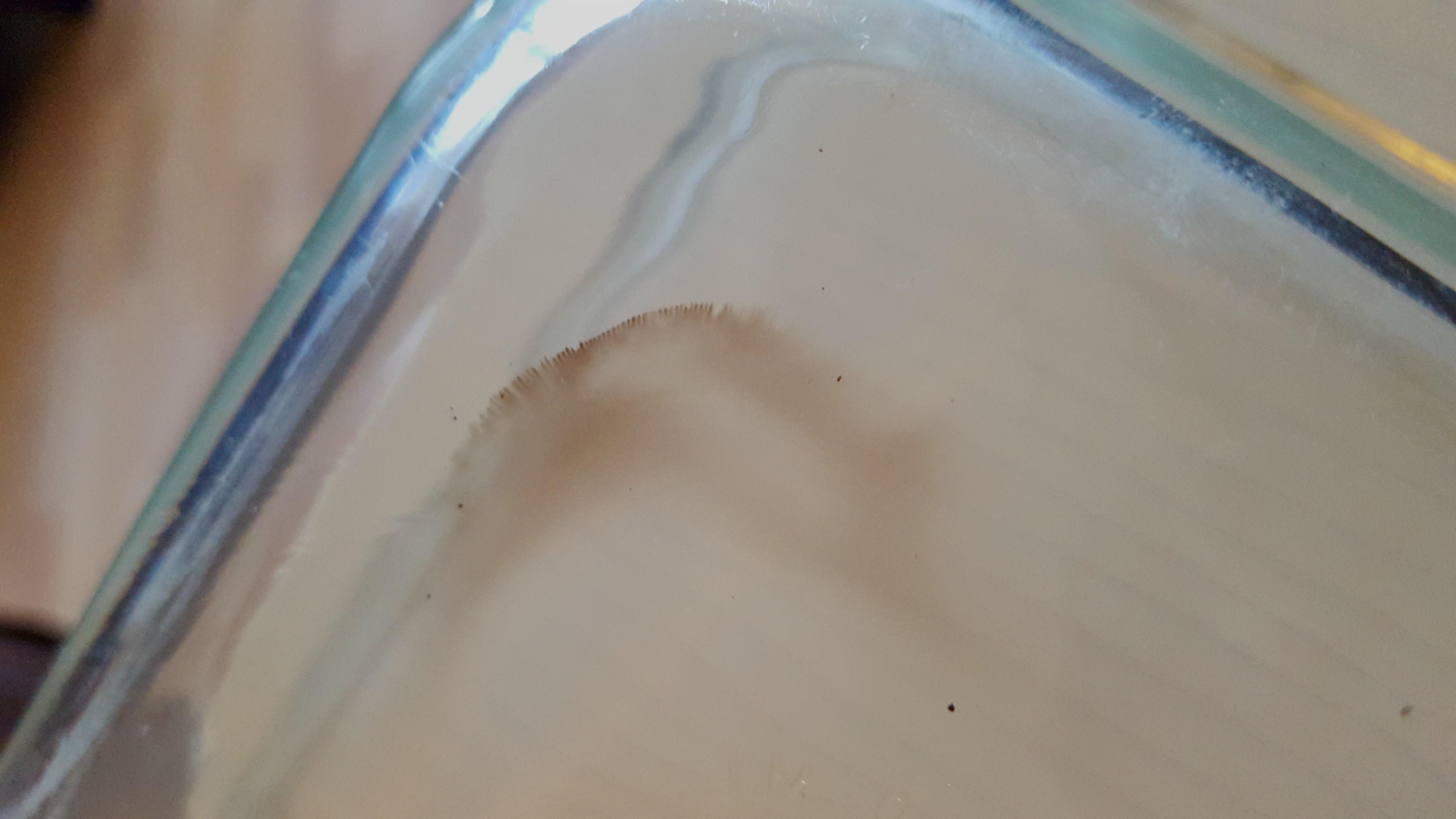
Chocolate brown spore print
Over time, the mushroom has deposited its spores en masse onto the glass, revealing the brown spore print which confirms this mushroom is in the Agaricus genus. **Given the pink young gill color, odor, and pinkish/red bruising discoloration, I am about 95% certain that this mushroom was A. campestris, or the Meadow/Field Mushroom.
If I'm so certain this is A.campestris, why did I make this a "Random Find" instead of a species post?
Excellent question you may or may not have asked yourself. Either way, let me give you the answer which might explain how my mushroom posts come out the way they do.
There are two glaring issues with the identification I've made here:
- I only have one example of the mushroom to go by, roughly in the middle of its maturation cycle. Before I write a species post using my own pictures, I like to have examples of the species in every phase of its maturation; and, perhaps more importantly
- This mushroom was not growing in exactly the right kind of place!
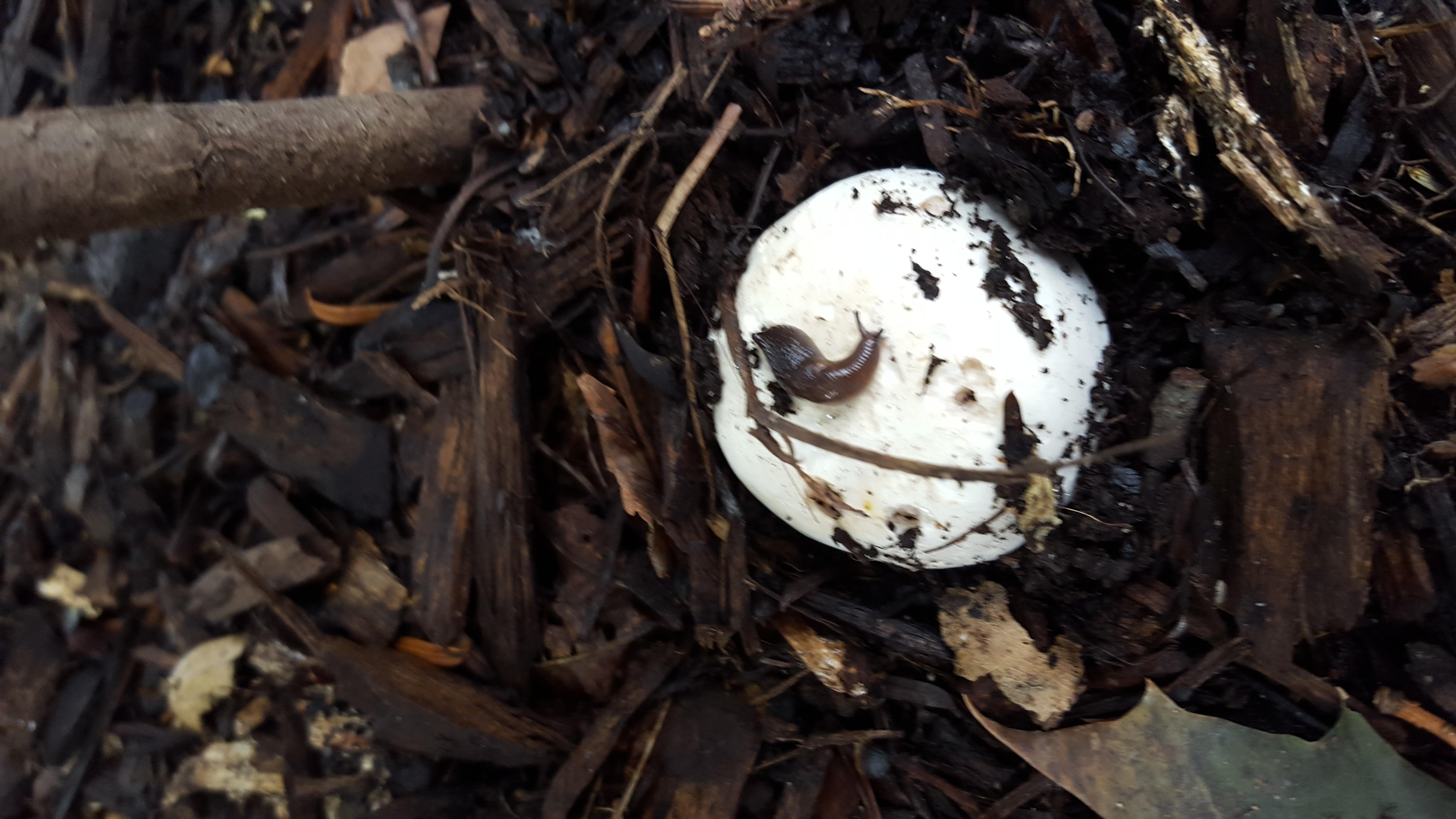
There is a reason that A.campestris is referred to as the Field or Meadow mushroom
It is supposed to grow in Fields or Meadows - meaning on lawns or grass. However, this mushroom was growing in the mulched area at the front of my apartment building. Now, not to long ago I think the area under that mulch was a dying lawn, which would be a more appropriate growth medium for A.campestris. But I certainly can't confirm whether the mushroom was growing on the mulch or on material beneath the mulch.
Given that gap in knowledge, I decided to play it safe and characterize this post as a "random find" rather than a species post.
THIS POST IS NOT INTENDED FOR FORAGING PURPOSES AND TO USE IT FOR THOSE PURPOSES WOULD BE DANGEROUS. DO NOT HUNT WILD MUSHROOMS WITHOUT RELYING ON A COMBINATION OF PROFESSIONAL FIELD GUIDES, IN PERSON PROFESSIONAL GUIDANCE, OR IN PERSON GUIDANCE BY SOMEONE TRUSTWORTHY WHO HAS COPIOUS LOCAL, SPECIALIZED MUSHROOM HUNTING EXPERIENCE. FAILURE TO DO SO CAN RESULT IN GRIEVOUS PERSONAL HARM OR DEATH.
Photos Are My Own
Information Sources:
[1]Kuo On A.campestris
[2]Wikipedia on A.campestris
[3]First Nature on A.campestris
[4]Kuo on A.xanthodermus
[5]First Nature on A.silvaticus
